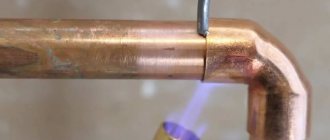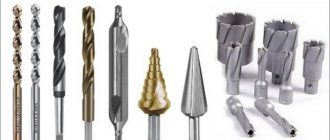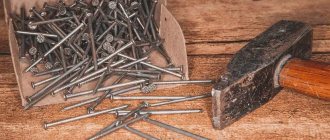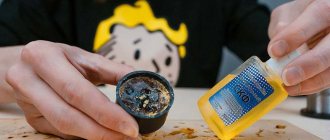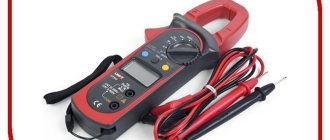If in Soviet times there was a game for schoolchildren, the essence of which was to solder a radio-electronic microcircuit on their own, which they successfully did, but now the question of how to properly use a soldering iron puts many in a difficult position. Although learning how to solder with a soldering iron is not so difficult, and having mastered the basics for “dummies”, you will be able to carry out simple work on your own without turning to specialists.
What is rosin: advantages and disadvantages
Coniferous trees differ from others in their high resin content. If you clean them and remove the water and turpentine, you get a yellow solid - rosin .
It is used in the manufacture of many substances. The resin for soldering is pine. It does not contain substances that reduce dielectric characteristics. Other impurities in minimal quantities. Rosin is a natural flux and has its advantages for those who like to solder at home:
- sold freely;
- low cost;
- natural, does not emit harmful substances;
- It’s easy to create your own liquid composition;
- low melting point;
- high fluidity.
Working with natural flux is easy. Even novice radio amateurs know how to use rosin when soldering. When working at home, it is convenient to use the low melting point of rosin for soldering. In this case, there is no need for enhanced ventilation; simple ventilation of the room is sufficient.
The shelf life of the resin is unlimited . Solid, irregularly shaped crystals can remain in a closed jar for years without losing their properties.
Natural flux also has disadvantages. Rosin, which does not dissolve in water, is at the same time hygroscopic. It absorbs moisture. The soldered joint begins to oxidize. Places where parts are soldered must be immediately coated with protective varnish and other substances.
How to use rosin
When soldering parts and contacts, it is recommended to consider several points:
- Hot rosin can dissolve oxide films. This property is relevant when soldering contaminated surfaces.
- When choosing a temperature regime, the melting temperature, not the melting temperature of the resin, is taken into account. Recommends heating the flux and parts to +100…130°C. On a cold surface, rosin and solder cool quickly.
- The use of resinous fluxes by beginners often results in the formation of soot on the soldering iron tip. It is important to maintain the heating temperature, prevent increased smoke formation, and not turn the rosin into a dark brown viscous mass.
Methods of obtaining
Soldering flux is obtained from pine sap . Rosin can be obtained from other coniferous trees, but it will contain more impurities. Pine resin is cleaned by heating water and turpentine out of it. The result is a solid, irregularly shaped pieces. Rosin of the Zhivitsa variety is the purest and does not contain fatty acids.
Gasoline is used to make Extraction Rosin. The resin is dissolved in it, then the composition is filtered to remove impurities. After this, the solvent is evaporated. The result is orange or light brown rosin. It is inferior in quality to Zhivitsa, since its acid number is higher.
When making sulfate soap, a by-product is released - tallow rosin . Its composition depends on the materials used and processing technology.
What types exist
Varieties of rosin fluxes according to production method, composition of raw materials:
- Gum rosin is often produced from pine resin, less often from other species of coniferous trees. Raw materials are collected by cutting the bark of living trees. The name of the flux appeared by analogy with the original product. Pine resin contains up to 80% rosin and 20% turpentine. Gum rosin is of high quality, containing from 90 to 94% resin acids, up to 1.5% fatty acids. The concentration of unsaponifiable substances is no more than 6...7%. Gum rosin is rare. It is often replaced with extraction and tallow analogues.
- Extraction rosin mixture is produced by extracting a mixture of crushed coniferous wood (threshing) and gasoline, which acts as a solvent for organic acids. This rosin differs from gum rosin in its dark shade and softening temperature; it is 10–15 degrees lower, averaging +55°C. The acid number of the extraction soldering flux is within 150 mg KOH/g, the mass fraction of fatty acids is not higher than 12%. To improve performance properties, extraction rosin is purified. The procedure is called abandonment. Adsorbers absorb coloring components. The resulting product is close to gum in its chemical composition and properties.
- Tall solder rosin is the lightest. Produced from sulphate soap by vacuum distillation. The result is a resinous substance with a high concentration of abietic acid, which accelerates crystallization. The feedstock is waste from pulp and paper production. In terms of technical characteristics, tallow rosin is comparable to gum rosin.
A few words about the features of various types of rosin fluxes. Refractory gum contains practically no fatty acids, which are unacceptable when soldering some metals. The extraction water can contain up to 10% of them, and the total oil content can contain even more. In retail, flux is sold packaged in round metal boxes. The technical specifications are indicated on the label.
How to make liquid?
Solid soldering flux is not always convenient to use. If the metal is located horizontally and there is a lot of space on the board for working with a soldering iron, just take a piece of flux, melt it and add solder. Often the position of the part is horizontal and the tin flows off. In this case, liquid pine flux is used.
- Grind the rosin and pour into a glass container.
- Fill with acetone.
- Dissolve by placing a sealed container in hot water and shaking regularly.
Acetone can be replaced with turpentine, gasoline, ethyl alcohol and mineral oil to create a DIY soldering flux from rosin . When working with parts of any complexity, it is enough to apply the resulting liquid with a brush.
You can also make a gel. To do this, mix rosin with petroleum jelly. After dissolution, you can fill a syringe without a needle with the composition and apply flux or use a thick composition to rub the surface.
Types of rosin fluxes for soldering: 3 compositions for different situations
Rosin for soldering metals is used in various physical states. It is produced by industry in:
- solid crystalline state;
- special liquid solution;
- in the form of a gel.
Each of these types has its own application features, advantages and disadvantages.
Colophon resin in a crystalline state has been used for a long time, is popular, is well stored, and is easy to handle. However, the solderer needs to develop precise practical skills and be able to correctly maintain proportions when applying such flux in hard-to-reach places.
Liquid flux based on an alcohol solution has more versatile abilities. It is well suited for soldering parts of various sizes, both large and small. It is easier to maintain the correct proportion here, and its application to metals is carried out with a simple brush.
It is easy to make such a solution yourself based on concentrated medical or industrial alcohol and rosin crushed into fine powder. Pour liquid into a glass jar and add powder. The ratio is approximately 70/30%.
Mix everything and place in a warm place to dissolve. Check and shake periodically. You can add a little powder if necessary. The final readiness time is several hours, but the solution can be used even earlier.
Rosin gel has a viscous consistency. It is easy to coat the surfaces to be treated with this substance. They are more convenient to use in hard-to-reach places. The flux dosage is more accurately observed. In addition, the gel does not dry as quickly as alcohol solutions. Gel is more technologically advanced than solid crystals.
What can be replaced?
Why is rosin needed when soldering and what is it replaced with? The flux must dissolve metal oxides and coat the solder as it melts, protecting it from air . Depending on the metal that is being soldered, borax and shellac varnishes are used. Copper is soldered using wax and Vaseline. Mixed compositions are often created to work with bronze.
To work with not very critical parts, if you don’t have the necessary flux on hand, you can crush an aspirin tablet and drop some water. After mixing everything until smooth, use for soldering.
Organic fat can dissolve the oxide film. It is necessary to take into account its property of melting at low temperatures. Upon completion of work, any remaining grease should be washed off immediately.
The main advantages of rosin
Main advantages:
- Does not conduct electricity.
- Low cost, available for sale almost everywhere.
- Retains its properties at negative temperatures.
- Not affected by moisture, not washed off with water
- Long shelf life.
- Prevents corrosion on metal structures, effectively removes oxide film from the surface of the material being processed, and degreases the product.
Where else can resin be used?
Using tree resin as an additive to paints speeds up their drying . In electrical engineering you can find cables covered with paper impregnated with resins. The low dielectric constant of rosin allows it to be used for impregnation and creation of an insulating layer between high voltage wires.
The car has several components that can be repaired by soldering; the radiator especially often needs to be repaired, eliminating leaks.
Rosin is inserted into the fire fuse. It melts when the heating temperature of the device increases, breaking the circuit and protecting the equipment from overheating.
Familiar with the natural product and bowed instrument. Before each concert, musicians rub their bow with rosin. Rubbing gives the surface the ability to cause small vibrations as it slides along the string. The sound is deeper and richer. At home, you can stick a pin into a tree and tie a thread to it. It is enough to pass a piece of resin along a stretched thread and the pin will “sing.”
Head of the radio and electronic equipment repair department Serdyukov I.P.: “Rosin is added to the compositions of fluxes made from mineral oils and other substances intended for soldering copper and bronze. It weakens the anti-corrosion reaction and the oxide film is removed faster at temperatures below 450⁰. At home, you can prepare flux for copper by grinding rosin into powder, mixing it with petroleum jelly, and dissolving it in a steam bath. You can weld with pure resin by dipping a soldering iron in it.”
An old proven technique: an exercise for mastering the quality of soldering from experienced
Anyone can test their skills and improve their practical skills. To do this, you will need a soldering iron with a prepared workplace and a piece of copper wire from the electrical wiring.
12 pieces of equal length, about a couple of centimeters, are cut from it. They will serve as the edges of the cube. And it will need to be soldered and tested for strength with a slight compression force in the palm.
Practice this exercise and master proper, high-quality soldering. I hope that my material about rosin: what it is will help you develop this skill well. If you know other ways or have a different opinion from me, then write it in the comments. I recommend watching the video by AlexGyver “How to solder with a soldering iron.”
It contains a lot of useful information.
Soldering technology
For high-quality soldering with rosin, preparation begins with stripping the metal at the joint. It is necessary to remove dirt mechanically, remove grease using gasoline or alcohol.
The soldering iron will serve much better if it is tinning - covering the lower part of the tip with a thin layer of flux. To do this, the tool is warmed up and dipped into a jar of rosin or liquid flux is applied with a brush. The coating should be uniform, without gaps.
A piece of rosin is applied to the soldering area and melted. When the entire place is cleaned, the oxides are dissolved, solder is applied. It is melted, distributed, and it connects the parts. After cooling, tinning and varnishing are done.
The ends of the wires are first coated with flux, melting it with a soldering iron, then solder is applied, distributed evenly so that it covers the outside of the wire and connects all the fibers.
Alcohol composition
Previously, rosin for soldering was sold only in liquid form . Mainly alcohol solutions were used. It is convenient to work with them on any soldering area. Why melt solid pieces of resin and disperse hot liquid over the board, if it is much easier to apply a solution with a brush that will penetrate into the narrowest places and fill cracks.
If the volume of work is large, you can cover the entire area with an alcohol composition at once and gradually melt the flux in the soldering areas. The correct rosin solution contains an equal amount of components and adheres well to the metal surface.
Tubular solders
Tubular solder is a thin tube filled with flux .
The correct consumable for the job should match as closely as possible the chemical composition of what is already on the board. If it is not known what was soldered before, the entire board is cleaned. Modern technologies make it possible to fill a tube with rosin or other flux without breaks and with the same density along the entire length.
Soldering with tubular fluxes controls the amount of material. After work, there is no need to wipe the board, freeing it from any remaining rosin.
Rosin is a universal flux used for soldering non-ferrous metals. It is a natural product and does not adversely affect health. In many oil and fat fluxes, recycled resin is added to improve the properties.
Using solder with rosin
Manufacturers offer tin-lead solders, which contain rosin resin. It is sold in rods wound on reels. In fact, these are thin tin-lead tubes, the cavities of which are filled with molten rosin. It is both a flux and an additive material that forms a connection during tinning. Advantages of solder with rosin:
- increasing soldering speed;
- simplification of the soldering process.
During the soldering process, it is important to maintain a certain temperature regime. When overheated, rosin smoke appears and the release of tin and lead vapors increases. Safety precautions should not be neglected. If hot flux or solder gets on your skin, it must be removed; you must immediately shake off the melt particles from your clothing.
What it is
Everyone knows this word, but not many people know the details about rosin.
It is useful for regular users to know the composition and properties of rosin flux so that soldering is successful. Rosin is a substance that looks like glass. It can have all shades of beige, yellow, brown. It dissolves well in pure alcohol and benzene, less so in gasoline and kerosene, and does not dissolve at all in water.
The main active ingredient is resin acids, the concentration of which can reach 80-92%. The amount of higher fatty acids is noticeable, the mass fraction of which varies from 0.5% to 12%.
Negative sides
The disadvantages include several factors that prevent the use of the material in certain situations.
- In the absence of experience, low activity of elementoa may require additional processing. Use requires some skill to reduce processing time.
- Hyperscopicity may prevent the substance from releasing visible vapor during processing, which will lead to corrosion of the compound in the future.
- Available for application to small-sized assemblies of a certain metal composition. The product is applied to simple metals; other types of fluxes are used to process larger joints.
- The fragile design of the material can cause problems during transportation. Easily crumbles under mechanical stress.
There are other types of fluxes that actively interact with metal. Such elements interact with metal and consist of zinc chloride or ammonium. After soldering, the substance is removed from the product as much as possible, because corrosion processes are possible. Neutral substances, such as rosin, do not interact with metal and do not conduct electricity.
Alcohol composition
In some situations, when soldering hard-to-reach places, not solid rosin is used as a consumable, but a ready-made alcohol solution of a natural product.
The flux, known under the abbreviation SKF, contains 60% pure alcohol.
The rest of the mass is occupied by rosin itself. Instead of alcohol, you can use acetone. True, its smell is less pleasant.
Liquid flux is inexpensive and has good technical characteristics. Its consistency can be easily changed by increasing the amount of solvent. So, when working, more liquid compositions that have the consistency of a solution are used.
For soldering ordinary parts, the mass is made in the form of a viscous slurry. Any work with solvents should be carried out with good ventilation. Inhalation of released vapors and sublimating particles of the flux mass is harmful to the respiratory tract of the master.

